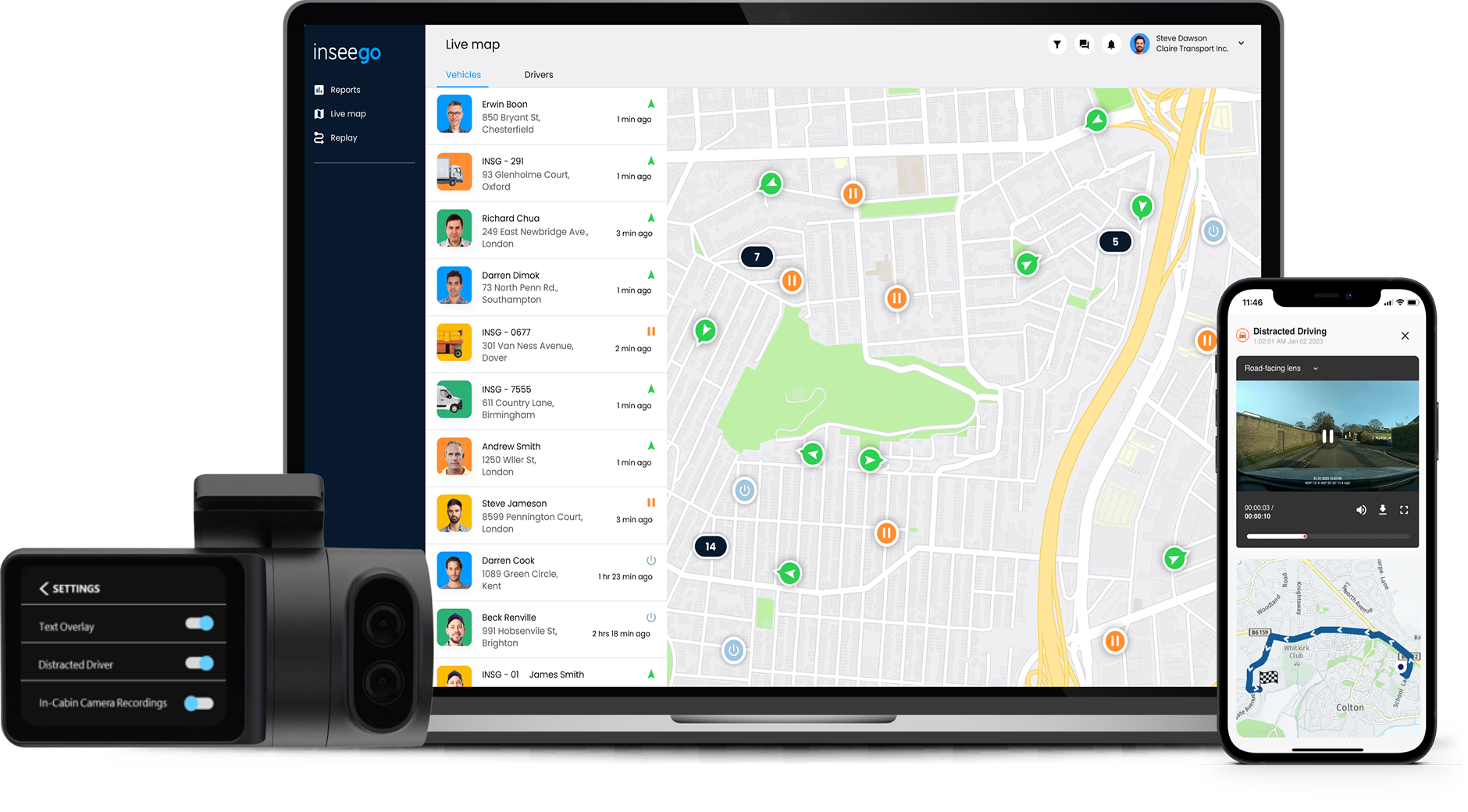Also in this category
View more in Safety & SecuritySafety & Security
A Simple Guide to HGV Driving Hours

The Department for Transport states that the average person spends 26 hours a week driving, but if you are driving a Heavy Goods Vehicle (HGV), you need to abide by a series of commercial driver hours rules.
In this article, we discover what the HGV driving hours rules are, why they were created and what happens when you don’t follow them.
Why are there rules for HGV drivers?
The HGV drivers’ hours are governed by the UK Government to match European Union (EU) rules. They state the number of hours that lorry drivers are allowed to drive in a set period, as well as HGV daily and weekly rest periods.
These rules are there to ensure driver safety and protect other road users by managing the driver’s tiredness and reducing the likelihood of driver errors.
The importance of these rules cannot be underestimated. 1 in 8 drivers have admitted to falling asleep at the wheel*, and the size of HGVs makes it even more dangerous for other road users. These rules can be the difference between life and death.
UK & EU driving hours rules
The rules differ for different types of HGV vehicles, but these are general examples of some of the regulations HGV drivers must follow.
Daily driving limits
Drivers cannot drive more than 9 hours a working day, they also cannot drive for more than 4 hours 30 minutes at a time without having a 45-minute rest break.
They do have the option to split this HGV daily rest period in two. For example, they can have one 15-minute break and one 30-minute break – but they still can’t exceed 4 hours 30 minutes of driving without a 45-minute break. Drivers are allowed to drive up to 10 hours a day, twice a week. However, they still can’t drive more than 4 hours 30 minutes at a time.
Weekly driving limit
In a week, drivers can’t exceed a driving time of more than 56 hours and they cannot drive more than 90 hours in a two week period. So, if they do drive 56 hours one week, they can only drive a maximum of 34 hours the consecutive week.
Penalties
The penalties for breaking these rules can be very serious. If a driver is found to be in breach of HGV working hour rules, they can face points on their licence, licence suspensions, fines and even imprisonment.
Drivers are ultimately responsible for exceeding their driving hours, but employers do have a responsibility to make sure they don’t breach the rules and compromise their safety.
Temporary relaxation of drivers hours rules
From time to time the UK government relaxes some hours of driving rules, for example Brexit related road transportation delays, driver shortages and the Coronavirus pandemic put pressure on supermarketsupply chains, requiring some driving period rules and break requirements be relaxed for a period of time.
How are drivers’ working hours tracked?
Regulations state that all driver working hours must be recorded by a tachograph, to keep track of the distance, speed, and hours they are driving. Inseego’s GPS Tracking System is a user-friendly tachograph and timesheet solution that will help you effectively manage your fleet.
We install a GPS tracking device into your vehicles that record a host of driving data, including:
- Driver journeys
- Drivers’ hours
- Vehicle locations
- Driver behaviour (speed and driving style)
- Fuel consumption
- Engine performance
This data is sent to our telematics software, which is installed in your computer systems so you can access all the information you need on a user-friendly dashboard.
Drivers will be given their own Driver ID. This allows your drivers to use different vehicles in the fleet, and also allows them to monitor their performance on our app – so they can correct any behaviours without manager intervention.
Benefits of our GPS Tracking Systems
Reduce the likelihood of accidents
Making sure your drivers are well-rested means they are less likely to get into an accident and reduces your insurance premiums. Our systems also offer the addition of a dash cam, adding an extra layer of security for your drivers by proving liability for any accidents.
Ensure compliance with driving hours regulations
Having a system to keep track of your driver hours means you can ensure everyone is meeting the legal obligations and avoiding any penalties.
Improve the efficiency of your fleet
Having access to data such as driver journeys allows you to make sure your drivers are using their time effectively. This allows you to manage your vehicles, optimise any routes, improve fuel efficiency, and provide time management support to your drivers (if needed).
Global recognition that’s unmatched
Our fleet management systems are used all over the world, providing road transport companies with vital driver insights to help them manage their fleets more efficiently and effectively.
Our flexible systems can be amended to suit the individual needs of your business to make sure you are getting all the information you need for your budget.
Explore our GPS Tracking System >
Or contact us today to get more information on how Inseego can help your fleet





